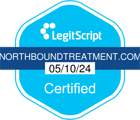What’s a doctor supposed to do?
It makes sense not to prescribe a mood-altering medication to a person in sobriety, even if they have a co-occurring mental disorder. But what do you do when the first-line, evidence-based, recognized-as-effective treatment for that mental disorder is also a potentially addictive drug?
ADHD, for instance – what is the best way to manage adult ADHD in a person in recovery?
Some experts say that you have to treat ADHD, and aggressively (meaning with psychostimulant medications), otherwise the future is bleak for such patients. ADHD affects 3 to 5% of children and adolescents. At least half of those children and adolescents will go on to develop adult ADHD. And the effectiveness of psychostimulants on hyperactive and impulsive behaviors is incontrovertible.
In a recent Psychiatry Academy podcast, Dr. Joseph Biederman, Chief of Clinical and Research Programs in Pediatric Psychopharmacology, describes poignantly how adults with ADHD suffer if left untreated, not only from their increased risk of accidents and smoking but in their inability to control or even recognize their own self-defeating behaviors. They are distractible, poor planners (especially financially), they do not follow through on tasks, have low frustration tolerance, are easily overwhelmed and quick to lose their temper. They quit jobs prematurely over real or perceived slights from co-workers or bosses.
“None of these things will get you Brownie Points with others,” says Biederman. “So this condition profoundly affects the ability of the child or adult in their social transactions.”
To experts like Dr. Biederman, treatment of ADHD with psychostimulants in patients with a history of substance use disorder not only can be done, it must be done. To not do so dooms these people to a lifetime of bad choices, frequent job changes, divorce, financial instability, and premature death. Biederman speaks with authority it’s not hard to want to commit oneself to fight the under-treatment of ADHD with psychostimulant medications.
But other experts make the case that these medications are ridiculously overprescribed.
Dr. Anna Lembke at Stanford University, interviewed on NPR about her book “Drug Dealer, MD,” describes how prescription medications for pain, anxiety, and ADHD were adversely affecting her patients’ mental health. Over time opioids worsened their pain. Prescribing benzodiazepines to her patients only increased their anxiety. She specifically mentions her patients with ADHD whom she treated with psychostimulants: over time they asked for more medication, took higher and higher doses, but still they did not get better. When they tried, they had a very hard time getting off of these medications. Many used the drugs Dr. Lembke prescribed for non-medical reasons such as mood elevation and improved studying ability.
Her voice is no less authoritative, and she speaks with a moral clarity that quickly brings things back down to Earth. Lembke says she looked for the “Holy Trinity” of prescribing: “an opioid, a benzo and a stimulant.” Checking her state’s Prescription Drug Monitoring Program, she discovered that many of her patients were receiving multiple prescriptions from other doctors for the same medications. When confronted, these patients expressed a range of reactions from relief and gratitude to outrage and threats. Lembke’s argument devastates the idea of routinely using opioids, benzodiazepines, and stimulants in all patients, not just those with addiction.
Her book could not be better timed as the country reels under an unprecedented epidemic of deaths from opioid pain relievers. The last year for which there is national data (2015) was the worst year ever for drug overdose deaths, and drug poisonings continue to grow and are picking up speed.
The CDC is back paddling as fast as it can from the “pain is the fifth vital sign” movement that swept through medicine in the 1990s. The message of this movement – trumpeted by pain specialists and manufacturers of opioid pain relievers – was that opioids were safe and effective for use in chronic pain and that they rarely produced addiction if prescribed for legitimate pain. None of these beliefs turned out to be true and state medical boards are trying to retrain practitioners. But the damage is done: large swaths of the population of the United States (especially its’ young people) were exposed to increasingly potent formulations of already powerful opioid pain relievers. The CDC, last year, issued a prescribing guideline, something it rarely does (and for which it has no enforcement authority), makes this one of the most important moments in modern public health history.
It doesn’t take long to realize other examples of this same phenomenon: benzodiazepines for anxiety disorders, sleep aids for insomnia, and psychostimulants for ADHD among them. In each of these cases, experts champion their use, research supporting their efficacy is published in reputable journals, pharmaceutical manufacturers bring new products to market, and patient enthusiasm for such medications grows.
But are the planets re-aligning?
Just as (or even if) we get a handle on the opioid problem will the next crisis of prescription drug addiction be a different class of over-prescribed intoxicants for a condition we also misunderstood?
What’s the right answer?
How do you follow the latest evidence about the use of medications in early sobriety and still uphold the time-proven principles of recovery?
There is at least one clue if you read between the lines of the CDC Prescribing Guideline.
The Guideline lists twelve recommendations that clinicians can follow when considering the use of opioid pain relievers in adults with chronic pain. Just for fun, I pulled out the words “chronic pain” and “opioid pain relievers” and put in the words “ADHD” and “psychostimulants” – to see if it still fits.
Some of the suggestions in the Guideline fit the situation. Others didn’t.
Paraphrasing the language of the CDC Guideline, these are the ones that might apply.
1. PROPER ASSESSMENT
The prescriber should realize that the decision to prescribe any controlled substance or potential intoxicant to a patient for long-term therapy is momentous and should not be taken lightly or done routinely.
Effort should be made to maximize non-addicting and non-pharmacologic, evidence-based treatments. These include the use of non-stimulant medications as well as Cognitive Behavioral Therapy. Patients should be encouraged to engage in peer support, either through 12-Step meetings or other similar mutual
2. BETTER COMMUNICATION
The clinician should strive for good communication with the patient, discussing the risks of psychostimulant medications as well as their expected side effects, the possibility of triggered craving, and the risk of misuse of the prescription or relapse to previous drug use.
Clinician and patient should establish realistic goals prior to beginning psychostimulant medication and begin treatment only if expected benefits outweigh risks. There should be objective measures to assess clinically meaningful improvement.
Clinician and patient should discuss how the medication will be discontinued if goals are not met.
3. CAREFUL FOLLOW UP
The clinician should check his/her state’s Prescription Drug Monitoring Program (PDMP) for other prescriptions the patient has received from other providers.
Urine drug testing should be used prior to starting therapy to ensure no illicit drugs are being used. Testing should be performed periodically throughout treatment.
Follow-up should occur within one month of initiating pharmacotherapy to reassess drug effects/risks/benefits and should continue periodically thereafter (every 3 months).
Clinicians should employ strategies to mitigate the risk of psychostimulant medication, including pill counts and discussion of potential side effects with family members.
If behaviors consistent with diversion or intoxication are observed the clinician should be prepared to refer the patient for Substance Use Disorder treatment.
The CDC Guideline is really just a plea to practice good medicine. It outlines a structured process for minimizing the harm of potentially addicting medications prescribed to people in recovery and maximizing their benefits.
These medications are not dangerous themselves – intoxication is what undermines recovery. There are ways to use medications in recovery wisely, and with respect for the traditions of sobriety.
At Northbound we are committed to giving each patient the treatment that’s right for them: evidence-based and individualized, prudent not reflexive.
Northbound’s position regarding the use of psychostimulants is to first consider the best short-term and long-term benefits to our patients. We do not universally prohibit the use of prescribed psychostimulant medication by the recovering people we serve – that would be too rigid and is not consistent with providing truly individualized care.
We recognize the risks that potentially addicting medications pose to people in early recovery. We employ caution and good information to help our clients as they consider these medications. We believe that recovery will always consist of more than taking a pill or getting a shot. Getting sober is hard work and abstinence from intoxication is necessary and achievable, It is the most favored endpoint of treatment to produce complete, long-lasting and abiding sobriety and support a thriving recovery lifestyle.
References:
Lembke’s NPR interview
https://www.npr.org/sections/health-shots/2016/12/15/505710073/drug-dealer-md-contends-that-well-meaning-docs-drove-the-opioid-epidemic
Biederman podcast
https://itunes.apple.com/us/podcast/mgh-psychiatry-academy-podcasts/id347054176?mt=2
Dowell D, Haegerich TM, Chou R. CDC Guideline for prescribing opioids for chronic pain – United States, 2016. MMWR Recomm Rep 2016;65(1):1-49.
Sadock BJ, Sadock, VA. Kaplan and Sadock’s Comprehensive Textbook of Psychiatry
Humphreys KL, Eng T, Lee SS. Stimulant medication and substance use outcomes: a meta-analysis. JAMA Psychiatry. 2013;70(7):740-749.
Wilens TE, Faraone SV, Biederman J, Gunawardene S. Does stimulant therapy of attention-deficit/hyperactivity disorder beget later substance abuse? a meta-analytic review of the literature. Pediatrics. 2003;111(1):179-185
Lembke A. From self-medication to intoxication: time for a paradigm shift. Addiction. 2013;108:670-71.
Substance Abuse and Mental Health Services Administration. Adults with attention-deficit hyperactivity disorder and substance use disorders. SAMHSA Advisory. 2015;14(3):1-12.
Author
-

President, CEO & Founder at Northbound Treatment Network
Paul Alexander is the CEO, President & Founder of Northbound Treatment Network in Newport Beach, California. He believes wholeheartedly in transformational leadership, organizational health and effective, fully integrated substance use disorder and mental health treatment. With over 27 years of experience in behavioral healthcare, Paul has extensive knowledge of “in vivo” treatment modalities, clinical development, operations, strategy, marketing and financial planning. He has been widely recognized for his development of collegiate-based residential treatment programs for students in recovery and authored a research study at The University of California confirming this modality’s effectiveness.
Paul’s comprehensive professional experience, willingness to innovate, and emphasis on organizational health are vital factors in Northbound’s continued success. Paul received his Certified Addiction Treatment Specialist training at Saddleback College in Mission Viejo, CA, and was awarded Outstanding Alumni Service Award in 2002. Paul holds a Bachelor of Arts degree in Criminology, Law and Society, Summa Cum Laude, from University of California, Irvine, and a Juris Doctorate degree from Loyola Law School of Los Angeles. Paul currently serves on The National Association of Addiction Treatment Providers (NAATP) board. In addition, he serves on The Family Recovery Foundation board and The CarePossible board in Orange County; both organizations are committed to raising funds for family recovery and treatment for former military personnel. Paul is in recovery himself and lives in Orange County with his wife Silvana and his two young sons, Noah and Dean.










